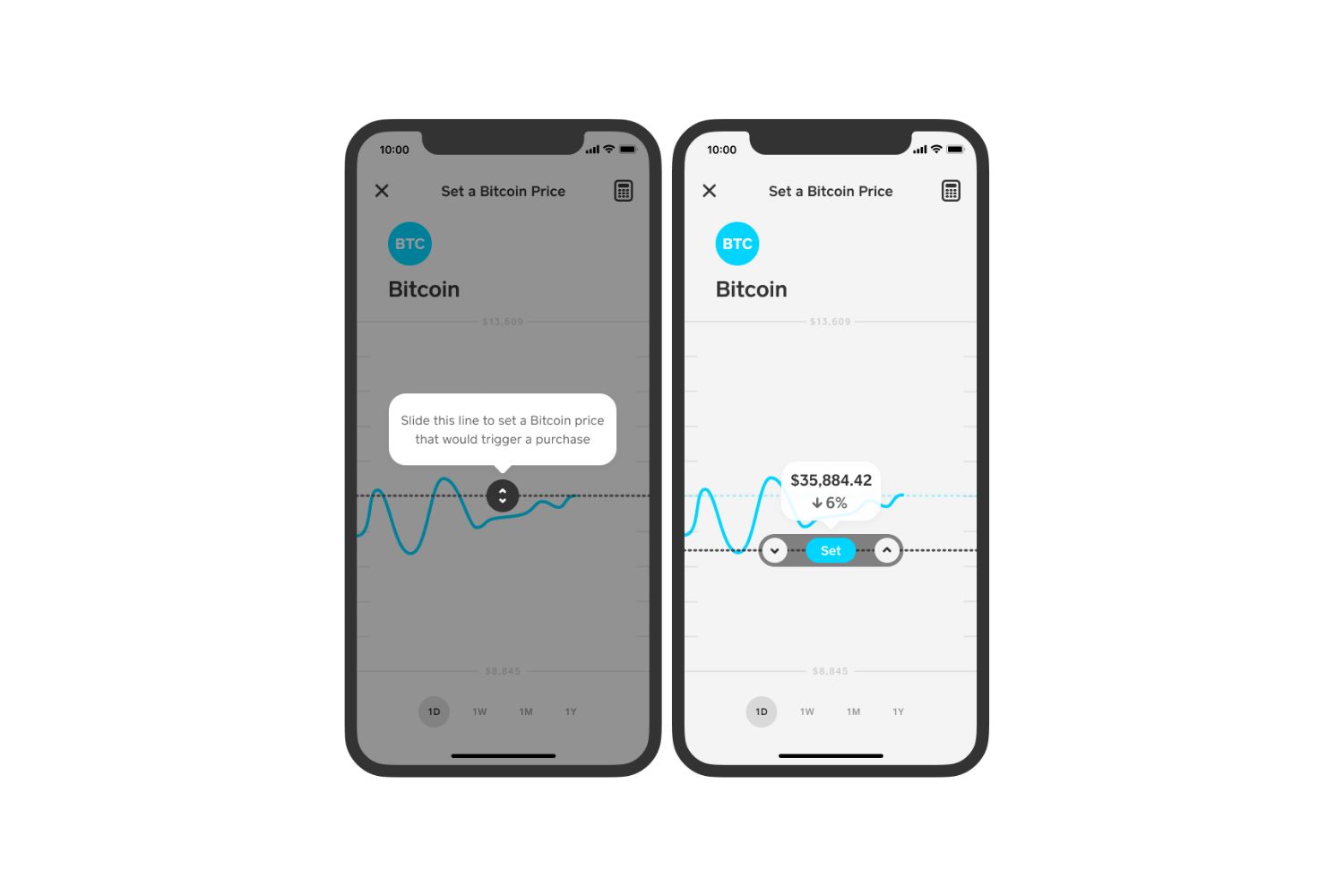Introduction
Bitcoin, the pioneering cryptocurrency that sparked both excitement and skepticism, has seen its value soar to unprecedented heights in recent years. However, not everyone believes that Bitcoin’s bullish run will continue indefinitely. In fact, there are those who believe that it is overvalued and due for a correction. This leads to the question: how do you bet against Bitcoin’s rise in value? The answer lies in a financial practice known as shorting.
Shorting Bitcoin involves taking a position where you profit if the price of Bitcoin falls. Unlike traditional investing, where you would buy an asset with hopes that its price will rise, shorting allows you to bet on the decline of an asset’s value. While it may sound counterintuitive, shorting can be a lucrative strategy if done correctly.
Before delving into the mechanics of shorting Bitcoin, it’s important to understand why someone would want to short it in the first place. We’ll explore the motivations behind shorting and highlight the various methods that traders and investors can employ to profit from a potential decline in Bitcoin’s value.
While shorting Bitcoin can be a profitable endeavor, it’s crucial to consider the risks and challenges that come with it. The volatility of the cryptocurrency market, regulatory uncertainties, and the potential for unexpected price surges pose significant risks to those attempting to short Bitcoin. We’ll delve into these risks and provide essential considerations that will help you make informed decisions before engaging in such trading strategies.
In this article, we’ll explore the different ways to short Bitcoin, including shorting on a cryptocurrency exchange, utilizing futures contracts, and engaging in margin trading. By the end, you’ll have a comprehensive understanding of the ins and outs of shorting Bitcoin, empowering you to make informed decisions when it comes to navigating the cryptocurrency market with precision and confidence.
What does it mean to short Bitcoin?
Before diving into the various methods of shorting Bitcoin, it’s crucial to understand the concept itself. Shorting Bitcoin essentially involves betting on the decline in its value. In other words, you are taking a position that allows you to profit if the price of Bitcoin decreases.
The process of shorting Bitcoin can be likened to borrowing Bitcoin from a third party and selling it at the current market price with the intention of repurchasing it at a lower price in the future. The borrowed Bitcoin is then returned to the lender, and the trader keeps the difference between the initial sale price and the repurchase price as their profit.
To execute a short sale, a trader must first find a platform or exchange that allows them to borrow and sell Bitcoin. This can be done through margin trading, futures contracts, or specialized cryptocurrency exchanges that provide short-selling capabilities. These platforms facilitate the borrowing and lending of Bitcoin, thus enabling traders to initiate short positions.
It’s important to note that shorting Bitcoin is a speculative and more complex strategy compared to simply buying and holding the cryptocurrency. When you hold Bitcoin, your potential losses are limited to the amount of Bitcoin you own. However, when shorting, your losses can theoretically be infinite if the price of Bitcoin continues to rise.
Shorting Bitcoin is typically employed by experienced traders, hedge funds, and institutional investors who have in-depth knowledge of market trends and the ability to analyze and interpret data. It requires a thorough understanding of market dynamics, technical analysis, and risk management to mitigate potential losses.
Now that we have a clear understanding of what it means to short Bitcoin, let’s explore the motivations that drive individuals and institutions to engage in this practice.
Why would someone want to short Bitcoin?
Shorting Bitcoin is a strategy employed by individuals and institutions who believe that the price of Bitcoin is overvalued or will experience a significant decline in the future. There are several motivations behind why someone would want to short Bitcoin:
- Profit from market downturns: Shorting Bitcoin allows traders to profit from downward movements in the price of Bitcoin. By taking a short position, they can capitalize on price declines and potentially generate substantial profits.
- Hedge against market volatility: Bitcoin is known for its extreme price volatility. Investors and traders may choose to short Bitcoin as a form of protection against downturns in the market. By offsetting potential losses from their long positions with gains from their short positions, they can potentially reduce the overall volatility impact on their portfolio.
- Take advantage of overvaluation: Some investors believe that Bitcoin is currently overvalued and that a price correction is imminent. Shorting Bitcoin allows them to capitalize on this perceived overvaluation by profiting from the price decline.
- Capture arbitrage opportunities: Shorting Bitcoin can also be used to capture arbitrage opportunities between different exchanges. If there is a price disparity between exchanges, traders can simultaneously buy Bitcoin on the exchange with the lower price and short it on the exchange with the higher price, thereby profiting from the price difference.
- Express a bearish sentiment: Some individuals may simply hold a bearish sentiment towards Bitcoin or the cryptocurrency market as a whole. Shorting Bitcoin allows them to express this sentiment and potentially benefit from their conviction in the market’s downward movement.
It’s important to note that shorting Bitcoin is a high-risk strategy and requires careful analysis and risk management. The cryptocurrency market is highly volatile, and unexpected price surges can lead to significant losses for short sellers. Therefore, it is crucial to conduct thorough research, use appropriate risk management techniques, and stay updated on market trends when engaging in shorting Bitcoin.
Now that we understand why someone would want to short Bitcoin, let’s explore the different methods available to execute a short position in the cryptocurrency market.
Different ways to short Bitcoin
Shorting Bitcoin can be approached through various methods, each offering different advantages and considerations. Here are the primary ways in which individuals can execute a short position on Bitcoin:
- Shorting Bitcoin on a cryptocurrency exchange: Many cryptocurrency exchanges offer the ability to short Bitcoin directly on their platforms. Traders can borrow Bitcoin from the exchange and sell it at the current market price, with the intention of buying it back at a lower price in the future to repay the borrowed amount. This method is relatively straightforward and accessible to retail traders. However, it is important to carefully choose a reputable exchange that supports short selling and offers sufficient liquidity.
- Using futures contracts to short Bitcoin: Futures contracts are financial derivatives that enable individuals to speculate on the future price of an underlying asset, such as Bitcoin. By taking a short position in Bitcoin futures, traders can profit from a decline in the price of Bitcoin. Futures contracts provide leverage, allowing traders to control a larger position with a smaller amount of capital. However, they also come with higher risks and margin requirements. It is crucial to have a good understanding of futures trading and risk management before engaging in this method.
- Shorting Bitcoin through margin trading: Margin trading involves borrowing funds from a cryptocurrency exchange or a peer-to-peer lending platform to amplify trading positions. Traders can leverage their capital and take short positions on Bitcoin by borrowing the necessary funds. Margin trading provides the opportunity for increased profitability but also carries higher risks. It is essential to understand the margin requirements, interest rates, and liquidation risks associated with margin trading.
Each method has its own set of advantages and considerations, and it is important to choose a method that aligns with your risk tolerance, trading experience, and access to trading platforms. Regardless of the chosen method, it is crucial to conduct proper research, develop a robust trading strategy, and implement risk management techniques to mitigate potential losses.
Now that we have explored the different ways to short Bitcoin, let’s delve deeper into shorting Bitcoin on a cryptocurrency exchange and understand the process involved.
Shorting Bitcoin on a cryptocurrency exchange
Shorting Bitcoin on a cryptocurrency exchange is one of the most commonly used methods to profit from a decline in the price of Bitcoin. It provides a straightforward and accessible way for retail traders to engage in short selling.
Firstly, it’s important to choose a reputable cryptocurrency exchange that supports short selling. Not all exchanges offer this feature, so it is crucial to select an exchange that provides the necessary functionality and liquidity for shorting Bitcoin.
Once you have chosen a suitable exchange, the process generally involves the following steps:
- Open an account: Sign up and open an account on the chosen cryptocurrency exchange. This typically includes completing any necessary KYC (Know Your Customer) procedures and securing your account with two-factor authentication for enhanced security.
- Deposit funds: Deposit the desired amount of funds into your exchange account. The deposited funds will be used as collateral for your short positions.
- Borrow Bitcoin: Borrow Bitcoin from the exchange. The amount you can borrow is typically determined by the collateral you provide and the exchange’s borrowing limits. The borrowed Bitcoin will be used to sell in the market.
- Sell borrowed Bitcoin: Once you have borrowed Bitcoin, you can sell it on the exchange at the current market price. This initiates your short position.
- Buy back Bitcoin: Monitor the market and wait for the price of Bitcoin to decline. Once you believe it has reached a desirable level, you can buy back the borrowed Bitcoin at a lower price.
- Repay borrowed Bitcoin: After buying back the Bitcoin, return the borrowed amount to the exchange. Any difference between the selling price and the buying price, minus fees and interest charges, will be your profit.
- Withdraw funds: Finally, you can withdraw your profits and any remaining funds from the exchange back into your personal wallet or bank account.
It is crucial to carefully consider the trading fees, borrowing fees, and interest rates charged by the exchange. Additionally, stay attentive to market dynamics, price movements, and risk management techniques to mitigate potential losses.
Shorting Bitcoin on a cryptocurrency exchange offers convenience and accessibility for retail traders. However, it is important to have a solid understanding of the process, conduct thorough research, and employ risk management strategies to navigate the volatility and risks associated with short selling.
Next, let’s explore another method to short Bitcoin – using futures contracts.
Using futures contracts to short Bitcoin
Futures contracts provide another avenue for individuals to participate in shorting Bitcoin. Futures are derivative financial instruments that allow traders to speculate on the future price of an underlying asset, such as Bitcoin.
In the context of shorting Bitcoin, traders can enter into short positions on Bitcoin futures contracts, essentially betting on a decline in the price of Bitcoin. Here’s how it works:
- Choose a futures exchange: Select a reputable futures exchange that offers Bitcoin futures contracts. Some well-known exchanges that offer Bitcoin futures include the Chicago Mercantile Exchange (CME) and the Intercontinental Exchange’s Bakkt platform.
- Open an account: Sign up and open an account on the chosen futures exchange. This usually involves completing the necessary registration process and fulfilling any required identification and compliance requirements.
- Deposit collateral: Deposit the required collateral into your futures trading account. The collateral serves as a margin or security deposit for your futures positions. The specific margin requirements vary depending on the exchange and the contract specifications.
- Enter a short position: Place an order to sell Bitcoin futures contracts. This order allows you to open a short position and profit if the price of Bitcoin declines as anticipated.
- Monitor the market: Continuously monitor the movement of Bitcoin’s price and the value of your futures contract. Determine the optimal time to close your position and realize any profits or losses.
- Close the short position: When you decide to close your short position, place an order to buy an equivalent number of Bitcoin futures contracts. By buying back the contracts, you effectively exit your short position.
- Settle the contract: At the futures contract’s expiration date, the contract is settled. The settlement process may vary depending on the exchange and the specific contract. Settlement can be either in cash or via physical delivery of Bitcoin.
Trading Bitcoin futures contracts offers several advantages, including increased liquidity, leverage options, and the ability to trade on regulated platforms. However, it also involves certain risks, such as price volatility and the potential for substantial losses if the market moves against your position.
It’s important to carefully consider the margin requirements, fees, and contract specifications offered by the futures exchange. Additionally, be sure to stay updated with market news, employ risk management techniques, and have a solid understanding of futures trading before engaging in this method of shorting Bitcoin.
Now that we have explored using futures contracts to short Bitcoin, let’s move on to another method – shorting Bitcoin through margin trading.
Shorting Bitcoin through margin trading
Margin trading provides another avenue for individuals to short Bitcoin by borrowing funds and leveraging their trading positions. By engaging in margin trading, traders can amplify their potential profits (or losses) by trading with borrowed funds.
To short Bitcoin through margin trading, follow these steps:
- Choose a margin trading platform: Select a reputable cryptocurrency exchange or peer-to-peer lending platform that offers margin trading for Bitcoin. Ensure that the platform supports short selling and provides sufficient liquidity.
- Open an account: Sign up and open an account on the chosen margin trading platform. Complete any necessary registration procedures and adhere to any KYC (Know Your Customer) requirements.
- Deposit collateral: Deposit the required collateral, usually in the form of Bitcoin or another cryptocurrency, into your margin trading account. This collateral will serve as a security deposit for the borrowed funds.
- Borrow Bitcoin: Borrow Bitcoin from the platform by utilizing the collateral in your margin trading account. The amount you can borrow typically depends on the collateral’s value and the platform’s borrowing limits.
- Sell borrowed Bitcoin: Once you have borrowed Bitcoin, sell it on the platform at the current market price. This initiates your short position.
- Monitor the market: Keep a close eye on the price movement of Bitcoin. Decide when it is advantageous to buy back the Bitcoin at a lower price to close your short position.
- Repay borrowed Bitcoin: Once you have bought back the Bitcoin at a lower price, return the borrowed amount to the platform. Any difference between the initial sale price and the repurchase price, minus fees and interest charges, will be your profit.
- Withdraw funds: Finally, you can withdraw your profits and any remaining funds from the margin trading platform back into your personal wallet or bank account.
Margin trading offers the potential for increased profitability through leverage, but it also exposes traders to higher risks. It is essential to carefully manage your positions, set stop-loss orders, and monitor market conditions to mitigate potential losses.
Before engaging in margin trading, thoroughly understand the margin requirements, interest rates, and liquidation rules set forth by the trading platform. Additionally, conduct proper risk management and adhere to your predetermined trading strategy.
By taking advantage of margin trading, individuals can potentially profit from a decline in the price of Bitcoin, amplifying their trading positions and potential returns.
Now that we have explored shorting Bitcoin through margin trading, let’s move on to the risks and considerations involved in shorting Bitcoin.
Risks and considerations of shorting Bitcoin
While shorting Bitcoin can be a profitable strategy, it is important to be aware of the risks and considerations involved. The volatile nature of the cryptocurrency market and the unique characteristics of Bitcoin itself pose several challenges for those looking to engage in short selling. Here are some key risks and considerations to keep in mind:
- Volatility: The cryptocurrency market, including Bitcoin, is known for its high volatility. Sudden price fluctuations can result in significant losses if the market moves against your short position. It is crucial to closely monitor market trends and use risk management strategies to mitigate potential losses.
- Regulatory uncertainties: The regulatory landscape surrounding cryptocurrencies is still evolving, and new regulations can greatly impact the market. Changes in regulations or government crackdowns on cryptocurrencies can have a profound effect on Bitcoin’s price dynamics. Stay updated with regulatory developments to assess potential risks to your short positions.
- Unpredictable price surges: Bitcoin has a history of experiencing rapid and unexpected price surges. These surges can trigger short squeezes, where short sellers are forced to cover their positions at significantly higher prices. This can lead to substantial losses if you are not prepared to react swiftly or implement risk management measures.
- Liquidation risk: If the price of Bitcoin rises too quickly, you may face the risk of being liquidated. Margin trading platforms and futures exchanges often have predetermined liquidation thresholds. If the value of your collateral falls below these thresholds, your position may be automatically closed, resulting in losses.
- Counterparty risk: When shorting Bitcoin on an exchange or using margin trading, you are exposed to counterparty risk. This means that if the exchange or lending platform fails or is hacked, your funds and short positions could be at risk. It is crucial to choose reputable platforms with robust security measures and a strong track record.
- Emotional stress: Shorting Bitcoin can be emotionally challenging, especially during periods of market volatility. It requires discipline, patience, and the ability to make rational decisions amid market fluctuations. Emotion-driven decisions can lead to poor trading outcomes and amplified losses.
It is important to carefully consider the risks involved in shorting Bitcoin and to approach it with a well-researched and disciplined mindset. Develop a solid trading strategy, employ risk management techniques, and stay updated with market trends and news to make informed decisions.
While shorting Bitcoin can be lucrative if done correctly, it is crucial to thoroughly understand the risks and undertake proper risk management measures to navigate the volatile cryptocurrency market successfully.
Having explored the risks and considerations of shorting Bitcoin, let’s wrap up our discussion.
Conclusion
Shorting Bitcoin is a strategy employed by traders and investors who believe that the price of Bitcoin will decline. By taking a short position, individuals can profit from downward price movements or hedge against market volatility. While shorting Bitcoin can be a potentially profitable endeavor, it is not without risks and considerations.
In this article, we explored the different methods of shorting Bitcoin, including shorting on a cryptocurrency exchange, using futures contracts, and engaging in margin trading. Each method has its own advantages and considerations, requiring proper research, risk management, and understanding of market dynamics.
Shorting Bitcoin on a cryptocurrency exchange provides a straightforward approach to short selling and is accessible to retail traders. It involves borrowing Bitcoin, selling it, and buying it back at a lower price to profit from the price decline.
Using futures contracts is an alternative method that allows traders to speculate on the future price of Bitcoin. By taking a short position in Bitcoin futures, traders can profit from a decline in its price. However, futures trading involves leverage and higher risks that require careful management.
Margin trading provides the opportunity to amplify trading positions through borrowed funds. By shorting Bitcoin through margin trading, traders can potentially increase their profits, but it also exposes them to greater risks, such as liquidation and market volatility.
It is crucial to be aware of the risks associated with shorting Bitcoin. Volatility, regulatory uncertainties, unpredictable price surges, counterparty risk, and emotional stress are among the key considerations. Proper risk management techniques, staying updated with market trends, and employing disciplined trading strategies are essential for navigating the cryptocurrency market successfully.
In conclusion, shorting Bitcoin can be a viable strategy for those who anticipate a decline in its price. However, it requires rigorous analysis, risk management, and a comprehensive understanding of the unique characteristics of the cryptocurrency market. By equipping yourself with knowledge and caution, you can potentially generate profits from shorting Bitcoin while effectively managing the inherent risks.

























